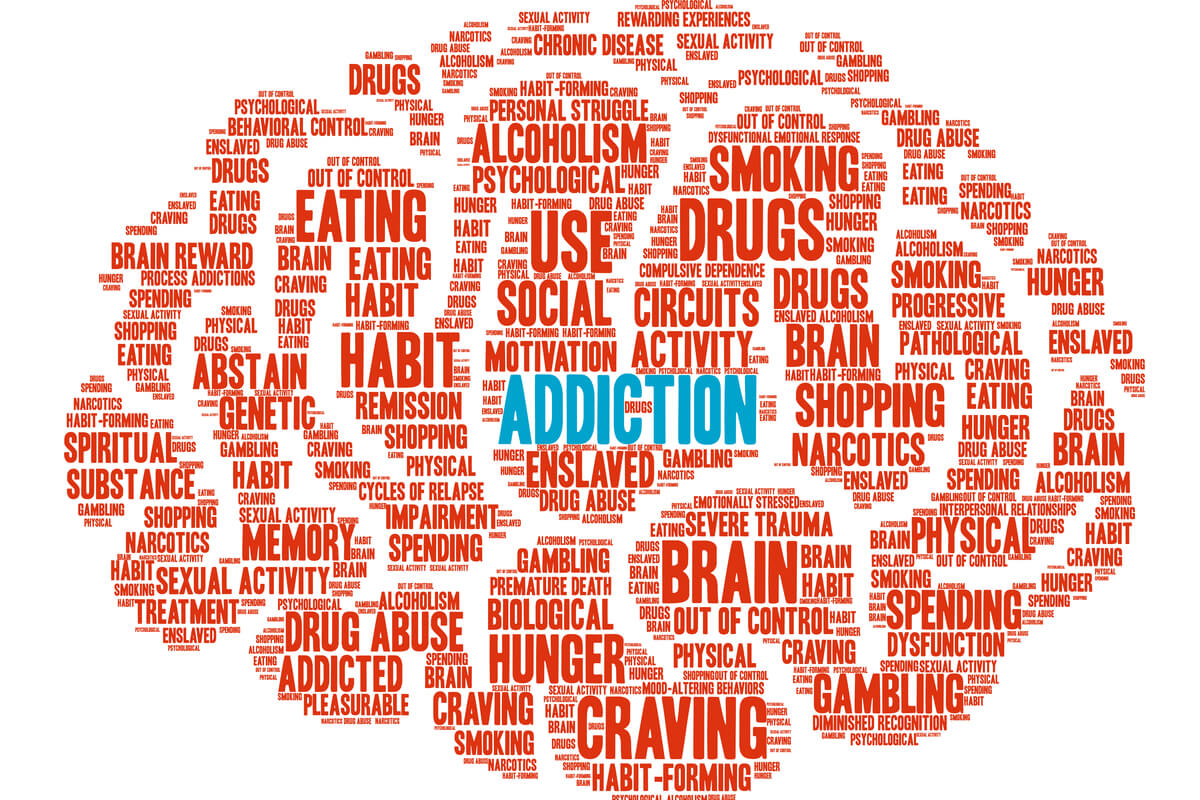
Cyberbullying can cause a number of mental health issues. It is well associated with raising a person’s risk of drug misuse, which can lead to addiction.
Cyberbullying doesn’t only happen to young people, although adult cyberbullying is understudied.
What Is Cyberbullying?
Cyberbullying is bullying that occurs through the use of digital technologies.[1] It is commonly associated with the use of social media, but it can also include bullying through digital games, texting, and more.
The goals and methodology used by cyberbullies can be varied, and we’ll discuss those aspects of bullying in more detail later. This type of bullying is generally done to try to scare, anger, or shame the person or persons a bully is targeting.
Many older adults unfamiliar with newer technology underestimate the severity and damage associated with cyberbullying. Common advice is simply to “ignore it” or “get off the internet” without a realization that a significant amount of many people’s modern lives revolve around the use of digital technology. Simply using technology in any capacity can open up both children and adults to the effects of cyberbullying.
Key Statistics Related to Cyberbullying
Some key statistics related to cyberbullying include the following:
- At least 37% of young people between the ages of 12 and 17 report having been bullied online, with 30% reporting this type of bullying has happened more than once.
- About 95% of teens are online, with most being nearly constantly connected to the internet in some form through their mobile phones.
- Almost 25% of students admit to having done or said something mean or cruel to another person online.
- Approximately 60% of young people have witnessed online bullying, but most do not intervene.
- About 90% of teen victims of cyberbullying will inform a trusted adult about their abuse.[2]
Most Common Forms of Cyberbullying
These are some of the most common forms cyberbullying takes:[3]
- Sending mean texts or emails
- Posting hurtful and sometimes public messages on social media
- Spreading rumors online, often knowing them to be false
Some bullies will also impersonate someone online, using fake social media accounts and similar methods, with the goal of damaging a person’s reputation, ruining their relationships, and more.
Who Is Most at Risk for Cyberbullying?
While cyberbullying can happen to anyone, some groups are more likely to be bullied than others, sometimes significantly so.[4] Consider these stats:
- One study showed 38% of girls report being cyberbullied compared to 26% of boys.
- LGBTQ+ youth were shown in a survey by advocacy group GLSEN to be three times more likely to be bullied online. Another study showed that 52% of LGBTQ+ youth between the ages of 11 and 22 experienced cyberbullying multiple times, often for reasons directly related to their sexual identity.
- Some studies suggest that students with special needs were two to three times more likely to be bullied by their peers compared to students without special needs.[4]
Cyberbullying Happens at All Ages
Importantly, cyberbullying can happen at all ages. If an individual is connected to other people through digital devices, they have the potential to be cyberbullied.
Cyberbullying information tends to focus on adolescents and teens. These groups are indeed generally the most vulnerable to bullying, and it’s important to work to protect them, but adults can be cyberbullied too.
Unfortunately, the seriousness of adult bullying is often downplayed, and victims can be stigmatized. This type of bullying is also often understudied.
If you’re being bullied as an adult, there are ways to react appropriately that can help to resolve at least some of the problems you’re having that younger people don’t always directly have access to.[5] What’s important is to not respond to bullying behavior with similar behavior. Instead, use the tools many companies and regulators have put in place to stop harassment.
Reporting harassing behaviors on social media platforms can often result in people getting banned. In some cases, you may even be able to take legal action against people harassing you. The best way to respond is going to depend on the bully’s exact behavior and the tools they use to harass you.
Understand that it isn’t “overreacting” or “being immature” to take action to stop yourself from being harassed. Adults, like younger people, don’t deserve to be bullied, and bullying can still affect their mental health. Feeling bad about people acting hateful or cruel toward you online is a normal reaction, and it makes sense to work to stop that behavior.
How to Recognize Cyberbullying
Recognizing cyberbullying is about being vigilant. Pay attention to the way people are treating you and those you know in digital spaces. While not all cyberbullying is public, at least some of it is.
It can sometimes be difficult to tell the difference between jokes and willfully cruel behavior, but the real difference is in how the behavior makes the target feel and the intention behind the behavior. Both online and in-person, actions designed to hurt another person emotionally or otherwise damage their quality of life are bullying. The same is true for actions that have those effects even if the individual doing the behavior didn’t necessarily intend it to be as harmful as it was.
As for bullying done in private spaces, this can be much harder to recognize. Pay attention to the behavior of the person you’re concerned about and the behavior of those you think may be bullies. Listen for rumors about acts of bullying, although you should understand not all rumors are true. But if you hear stories, it’s worth investigating further.
Bullying often causes a sudden change in the demeanor of the person being bullied, as it can hurt their self-esteem and otherwise cause various mental health issues. They may become less outgoing, talk less frequently about their day and how they feel, and just generally seem more anxious, frightened, and/or sad.
How Does Cyberbullying Affect Health?
The major concern about cyberbullying is that it can have demonstrable, long-lasting effects on a person’s mental health.[6] It can and has caused people to consider self-harm and sometimes even die by suicide.
These are common signs that a person is being affected by cyberbullying:
- Isolating from friends or missing social events
- Appearing upset when looking at a device
- Avoiding using of the phone or tablet
- Withdrawing from others and talking less
- Talking about troubling thoughts or emotions
- Difficulty concentrating on work or schoolwork
- Grades dropping
- Hiding their screens from others
- Isolating in their room more than usual
- Becoming less interested in activities that they normally like
- Missing school
- Mentioning self-harm or suicide
- Using substances like alcohol or drugs
Victims of cyberbullying were shown in a 2018 study to be twice as likely to engage in self-harm and attempt suicide. The majority of teens believe cyberbullying is a major issue for their peer group. While not entirely attributable to the rise of cyberbullying, suicide attempts by adolescents have spiked since 2008 to nearly double that year’s rate, which does coincide with the rise of the social media use and proliferation of smartphones.[6]
Other serious concerns regarding cyberbullying are its ability to cause a person to develop mental health issues like depression and panic attacks as well as the feelings of anger that bullying can cause in some people. Bullying often causes people to consider aggressive actions they normally wouldn’t take, including physically harming bullies or even committing acts of mass violence. Many young victims of bullying even begin carrying weapons to school.
How Can Cyberbullying Lead to Substance Misuse?
It isn’t surprising that bullying can lead to issues with substance use.[7] While more studies on this topic are needed, especially in how cyberbullying may impact adult substance use, there is still enough data to see a clear connection.
Drug Misuse
Adolescent targets of cyberbullying were shown in one study to be 2.5 times more likely to use marijuana.[7] General rates of drug use were also higher in those cyberbullied. This is likely related to the well-established connection between drug use and poor mental health, with many people struggling with substance use disorder (SUD) also struggling with co-occurring mental health disorders.
Research has also shown both traditional bullying and rule-breaking, including the use of drugs, are the strongest predictors that a person might engage in cyberbullying. While a correlation, not a causation, it’s noteworthy that substance misuse is associated with committing acts of cyberbullying, not just the other way around.
Alcohol Misuse
The same study quoted earlier that showed an increase in the chances of adolescents engaging in marijuana use also showed targets engaged in binge drinking at a similarly increased rate compared to their peers.[7] While alcohol is itself a drug, we note this here because many people think of alcohol separately.
Importantly, alcohol isn’t a “safe” drug just because it is legal. It can affect the developmental health of young people and is also highly addictive and prone to misuse for both youth and adults.
How to Help Someone Dealing With Substance Abuse & Cyberbullying
If you want to help someone who is being cyberbullied, especially if you know it has resulted in substance misuse problems, there are various ways to do so.[8]
Stopping bullying is often easier said than done, and it can involve confronting people you may find intimidating. With that said, there are many tools and tips available to help, if you want to do so. Here are some recommendations:
- Save evidence of bullying, even if it is hurtful, so the bully cannot deny their actions later.
- Don’t respond or retaliate to bullying with equally aggressive, toxic behavior.
- Confront bullies in a safe setting. This is likely best done with a group of people. You can tell the bully that their behavior is hurtful, inappropriate, and cruel.
- Let someone being bullied know that you think what’s being said or done to them is wrong and you want to help.
- Use the tools available to you, such as reporting functions on social media platforms.
If you’re helping someone else, especially if you’re an adult helping a child, make sure to listen to them and to consider the consequences of the actions you take. For example, fair or not, the reaction from a child’s peers to something like talking to a bully’s parents can vary significantly, and it could even make their bullying worse, especially if those parents aren’t cooperative. But in some cases, this is the best course of action. It will vary according to the specific situation.
It’s a good idea to get multiple perspectives on the situation. Make sure there hasn’t been a misunderstanding. Bullying is real and it’s important to stop it, but you want to fully understand the situation and the potential consequences of your reaction before you act.[8]
As for issues around substance misuse, it’s important not to come off as judgmental or angry, especially for substance misuse issues resulting from bullying and mental health problems.
Often, the best way to start helping is by talking to the person in a setting where they feel safe and comfortable. Avoid talking to them in a group if possible. Bring up the topic in private unless you think they’d prefer to talk in a public setting, like a coffee shop.
If you’re a parent, you may want to talk to your child alone rather than with your partner, so they don’t feel as intimidated in a “two-on-one” type conversation.
When talking about substance use, try some of the following strategies:
- Come into the conversation after researching substance use and addiction, so you can avoid stereotyping and making assumptions that aren’t true.
- Have useful information about recovery available, including treatment providers that can help a person get treated for SUD.
- Listen to the person. Even if everything they say isn’t necessarily true from your perspective, it is essential to understand what they feel and the best way to approach helping them.
- Be ready for multiple, potentially lengthy conversations, and practice patience at all times. Never start a conversation if you feel angry or upset at the person you want to help.
- Try to approach the conversation with realistic, important concerns, such as expressing that you’re worried about the person’s physical and mental health, and you know that continued drug misuse is likely to make it worse.
Treating Co-Occurring Disorders
Co-occurring disorders are any disorders that a person is dealing with at the same time. Substance use disorders and other mental health issues commonly co-occur because problems like depression and anxiety can easily lead someone to use drugs under certain circumstances. It’s important to treat co-occurring disorders together when possible, especially if one disorder (such as depression) contributed to the start of the other.
The best way to treat co-occurring disorders varies, and it’s important to acknowledge that a layperson isn’t the one who should be doing that treatment. Instead, the individual should talk with a mental health professional who can help them form a treatment plan. For interrelated issues like cyberbullying, SUD, and other mental health issues, therapy and counseling are essential to improving a person’s quality of life.
Additional Treatment Options
If substance use issues occurred because of cyberbullying, treatment for the addiction may involve medication. Medication cannot “cure” most mental health issues, including substance use disorder, but it can often help to control certain symptoms and improve a person’s quality of life.
For example, a person who has depression or severe anxiety may benefit from taking an antidepressant or similar medication. They should still talk with a mental health professional regularly to work at overcoming the root causes of those issues, but that is a long process. Medication can help you feel better, as you work through issues with a professional.
Similarly, medication can sometimes help with substance use disorders, depending on the drug a person has been using. For example, Suboxone, a combination of buprenorphine and naloxone, is often used to treat opioid use disorder. It can suppress drug cravings and withdrawal, allowing individuals to focus on the work they’re doing in therapy as they establish a new life in recovery.

Reviewed By Peter Manza, PhD
Peter Manza, PhD received his BA in Psychology and Biology from the University of Rochester and his PhD in Integrative Neuroscience at Stony Brook University. He is currently working as a research scientist in Washington, DC. His research focuses on the role ... Read More
- Cyberbullying: What Is It and How to Stop It. UNICEF. https://www.unicef.org/end-violence/how-to-stop-cyberbullying. February 2022. Accessed November 2022.
- 11 Facts About Cyberbullying. DoSomething.org. https://www.dosomething.org/us/facts/11-facts-about-cyber-bullying. Accessed November 2022.
- Types of Cyberbullying. Social Media Victims Law Center. https://socialmediavictims.org/cyberbullying/types/. Accessed November 2022.
- Who Is Most at Risk for Cyberbullying? LearnSafe. https://learnsafe.com/who-is-most-at-risk-for-cyberbullying/. February 2018. Accessed November 2022.
- Advice for Adult Victims of Cyberbullying. Cyberbullying Research Center. https://cyberbullying.org/advice-for-adult-victims-of-cyberbullying. Accessed November 2022.
- What Are the Effects of Cyberbullying? Kaspersky. https://www.kaspersky.com/resource-center/preemptive-safety/cyberbullying-effects. Accessed November 2022.
- Current Perspectives: The Impact of Cyberbullying on Adolescent Health. Adolescent Health, Medicine and Therapeutics. https://www.ncbi.nlm.nih.gov/pmc/articles/PMC4126576/. August 2014. Accessed November 2022.
- Tips to Help Stop Cyberbullying. ConnectSafely. https://www.connectsafely.org/tips-to-help-stop-cyberbullying/. December 2020. Accessed November 2022.
Download Our Free Program Guide
Learn about our program, its effectiveness and what to expect
Related articles
Imagine what’s possible on the other side of opioid use disorder.
Our science-backed approach boasts 95% of patients reporting no withdrawal symptoms at 7 days. We can help you achieve easier days and a happier future.









